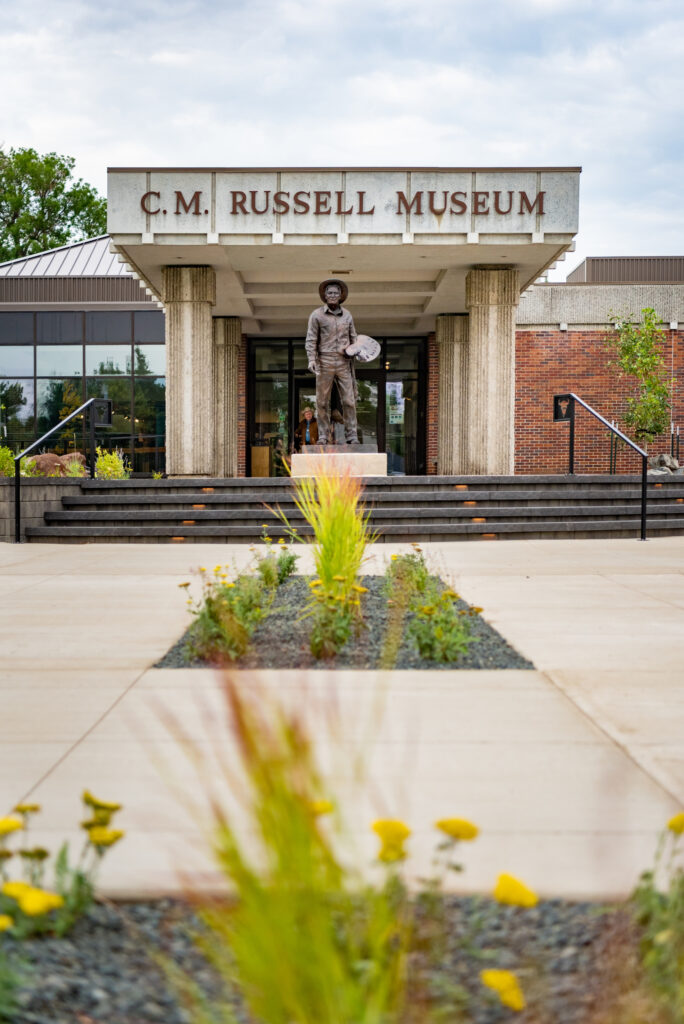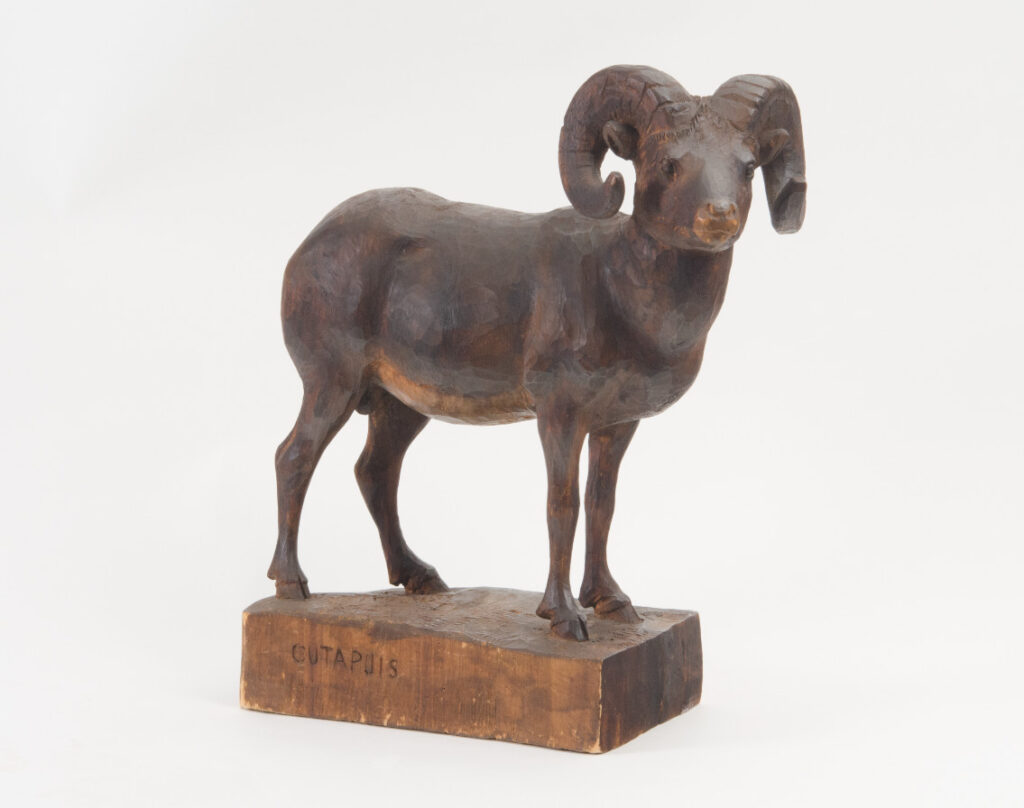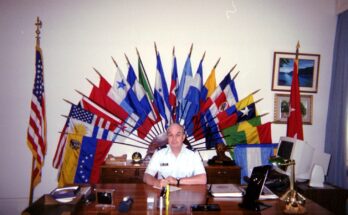
This year, the galleries of the C.M. Russell Museum are alive with voices – some spoken, some unspoken, but all deeply resonant. Four exhibitions, each with its unique rhythm and history, invite visitors to explore worlds crafted by artistry, resilience, and the landscapes of the West.
It began in April 2025, when the museum opened The Corwin Clairmont Collection. Clairmont, a member of the Confederated Salish and Kootenai Tribes, has spent a lifetime weaving activism into his creative practice. Through printmaking, mixed media, sculpture, and installation, his work reflects on how European settlement reshaped Indigenous lands and lives. Pieces from his Yellowstone Pipeline and Shadows series – created at MATRIX Press – line the gallery walls, challenging visitors to see the connections between history and the present. The exhibition stays with you long after you leave and will remain on view through December.
A month later, another voice joined the conversation – this time through a camera lens. The Photographs by Robert Osborn opened in May, drawing visitors to over seventy years of Montana’s stories. Osborn’s portraits reveal the character of small-town neighbors and a lifestyle working with the land, and his recent work in Native communities captures moments of quiet dignity and resilience. Living and working in Livingston, Osborn continues to create images that bridge generations, cultures, and ways of seeing. This exhibition runs through December 2025.
Also in May, Greetings From Charlie returned to the museum by popular demand. Here, Charles M. Russell’s illustrated letters feel as lively as the day they were written—pages full of humor, nostalgia, and the warm, unguarded spirit of a friend reaching out across the miles. Some tell stories from his boyhood, others contain lighthearted greetings, but each one reveals a more personal side of the artist behind the paintings. Visitors can explore this correspondence through the end of the year.
Then, in June, came a voice that was never spoken but always heard. SPEECHLESS: The Art of Blackfeet Artist John Louis Clarke opened first to members on June 26, then to the public the following day. Clarke – Cutapuis, “the man who talks not” – lost his hearing and speech as a child, but his carvings spoke volumes. Through the fine lines of a bear’s fur or the smooth curve of a mountain goat’s horn, Clarke captured the wildlife of Glacier National Park with extraordinary skill. His work tells a story of persistence, artistry, and the quiet ways an artist can shape history. This exhibition will remain on view until April 2026.
Together, these four exhibitions create a tapestry of voices – some challenging, some celebratory, some quietly profound. They speak across time and culture, asking visitors to listen, look closely, and leave changed.

Friend Trigg Illustrated Letter, 1916
Gift of Josephine Trigg Estate
953-1-061. Photo courtesy of C.M. Russell Museum

Mountain Sheep Ram wood, 1922
Gift of Dorthy Jean McKay and Gordon R. Dutt in memory of Dr. Gordon A. and Fleda Thurston Dutt
2001.13.02. Photo courtesy of C.M. Russell Museum



